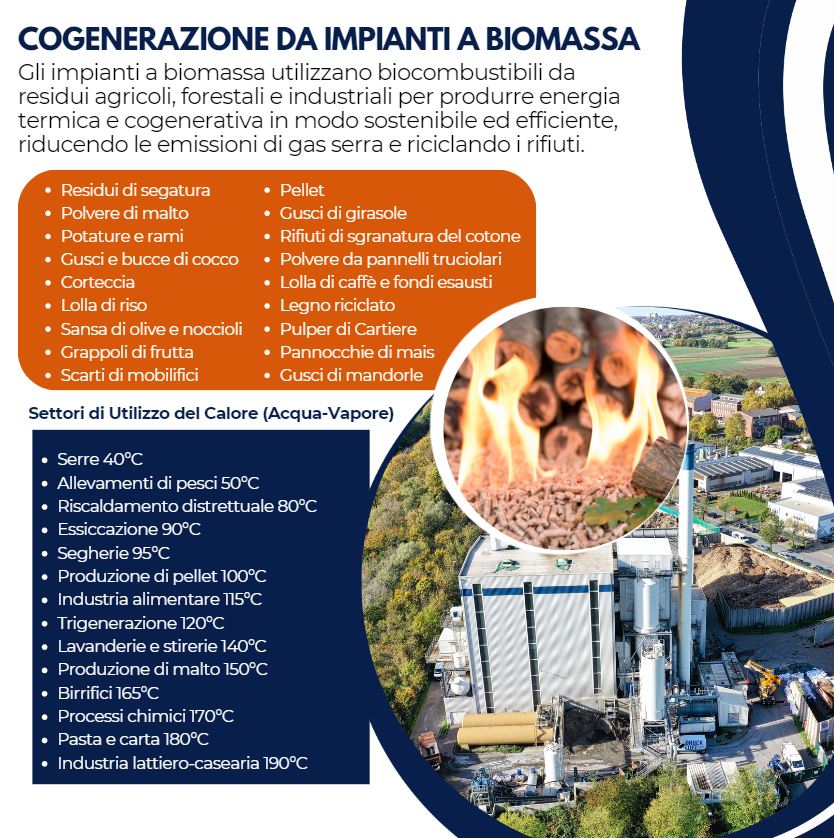- Brescia, Via fratelli Ugoni, 32 - 25126 Italy
- +39 030 25 59 291
- info@avogadroenergy.com
- +39 351 89 84 188
Biomass CHP plant
Biomass CHP plant - Cogeneration

Introduction
Biomass plants represent a sustainable and efficient solution for the production of thermal and cogenerative energy. They use a wide range of biofuels derived from agricultural, forestry, and industrial residues, contributing to the reduction of greenhouse gas emissions and to waste recycling.
Typical Biofuels
- Sawdust residues or sawmill by-products
- Bark
- Wood dust and chips
- Pellets
- Furniture waste
- Chipboard dust
- Recycled wood
- Olive pomace and pits
- Prunings and branches
- Barley dust
- Malt dust
- Rice husk
- Almond shells
- Sunflower husk
- Coffee husk and spent grounds
- Corn cobs
- Coconut shells and husks
- Empty fruit bunches
- Palm kernel shells
- Cotton ginning residues, stalks
- Paper
Sectors of Heat Utilization
Biomass plants can be employed in various industrial sectors to meet thermal needs at different temperature levels. Below are some of the main applications:
- Greenhouses (40°C): Hot water to maintain optimal plant growth conditions.
- Fish farms (50°C): Hot water to maintain ideal conditions for aquaculture.
- District heating (80°C): Hot water for urban heating networks.
- Drying (90°C): Hot water for agricultural and industrial drying processes.
- Sawmills (95°C): Hot water for wood drying.
- Pellet production (100°C): Hot water for wood pellet production.
- Rice (105°C): Hot water for rice processing.
- Food industry (115°C): Hot water for various food preparation and preservation processes.
- Trigeneration (120°C): Hot water for combined heat, power, and cooling production.
- Laundries and ironing plants (140°C): Steam for washing and ironing processes.
- Malt production (150°C): Steam for malt processing.
- MDF/plywood production (160°C): Steam for wood panel production.
- Breweries (165°C): Steam for beer production.
- Chemical processes (170°C): Steam for various chemical applications.
- Pulp and paper (180°C): Steam for pulp and paper manufacturing.
- Dairy industry (190°C): Steam for pasteurization and other dairy processes.
- Vegetable oil refining: Steam for oil refining.
Conclusions
The adoption of biomass plants for thermal and cogenerative applications offers numerous environmental and economic benefits. By using biofuels derived from residues and waste, it is possible to achieve significant energy savings and reduce environmental impact. Biomass plants therefore represent a valid and sustainable solution for the future of clean energy.
.jpg)



.jpg)